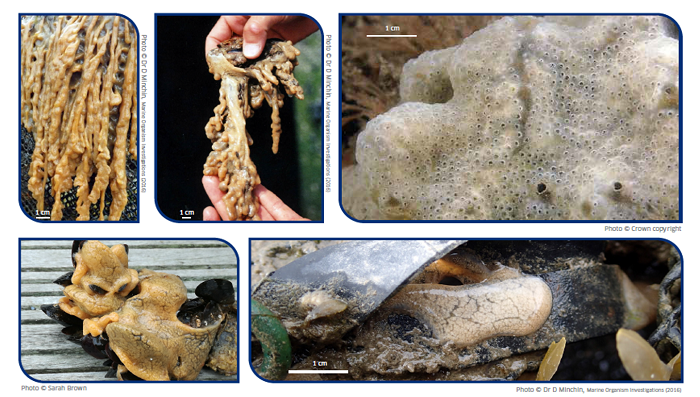Marine
The smothering impact of Didemnum vexillum
May 28, 2021 by Marine Directorate Communications No Comments | Category Aquaculture, Fisheries, Marine Directorate general, Marine Directorate Science, Marine Environment
What is it?
Didemnum vexillum, commonly known as ‘Carpet Sea Squirt’, is an invasive non-native marine organism that is now known to be established in the UK.
In a suitable environment, D. vexillum can grow incredibly quickly, creating carpet-like colonies that can rapidly cover large areas, smothering native organisms and habitats. This prevents the ecosystem from functioning normally, for example by preventing fish and other marine organisms from feeding and successfully breeding. D. vexillum is also known to impact shellfish by growing over scallops, mussels or oysters within native beds or reared in commercial aquaculture settings.
D. vexillum larval stages remain alive for only a short time in the water column, around 3-4 hours, but broken off pieces of the species colonies can be transported by the water current over large distances before settling in new areas.
The main pathways for spread of D. vexillum in marine environment include shipping, recreational boating and via the movement of aquaculture stocks. Due to the rapid growth and potential significant impact of D. vexillum on native organisms and habitats it is essential to manage this species in such a way that minimises its spread.
What does it look like?
It is difficult to correctly identify D. vexillum and it may look like some native species, but the following features may aid the identification:
- It can grow as thin flexible sheets (carpets) or hang down in long rope like growths
- It has a uniform pale orange, cream or off-white colour with light star-like patterns
- The colony surface has a leathery feel on touch (not slimy) and has a veined or marbled appearance with visible darker channels
What should I do if I find it?
- Note the location to the nearest 100m or provide GPS coordinates
- Take a photograph or detailed description
- Make contact with NatureScot via telephone: 01463 725000 or email: Enquiries@Nature.scot
- Assume that it is D. vexillum and do not move any material, stock or boats from the site
Further Information:
Community Biosecurity Plans for Loch Creran and Loch Fyne:
Picture credits: Dr D Minchin, Marine Organism Investigations, and Sarah Brown, Marine Biosecurity Consultant.
Tags: aquaculture, Carpet Sea-Squirt, Didemnum vexillum, invasive species, Loch Creran, Loch Fyne, marine environment, NatureScot



Leave a comment